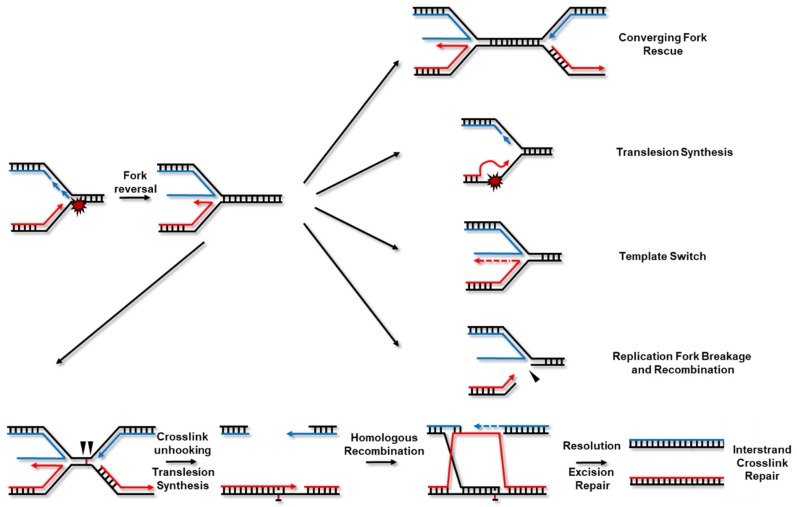Figure 1.
Replication fork Reversal and Restart Pathways. Stalled forks are rapidly reversed into four-branched structures by the combined activities of multiple DNA helicases. Stalled forks can be rescued by a converging fork arising from a nearby-fired origin or by activation of a local dormant origin by the replication stress response. In the event of replication fork stalling due to damaged bases, error-prone translesion polymerases can replicate past the problematic lesions. Alternatively, stalled polymerases can use an undamaged template to support genome replication, most often this template is the newly-synthesized strand on the sister chromatid. Stalled forks can also be nucleolytically processed (isosceles triangle) to yield single-ended DSBs that are repaired by recombination-based pathways. The best characterized inter-strand cross-link repair mechanism requires the convergence of two replication forks at the lesion but replication-independent repair can also occur. Single replication forks frequently traverse cross-links which allows post-replicative repair of the lesion. Nucleases (isosceles triangles) incise a single DNA strand in 5′ and 3′ of the cross-link thereby creating a double-strand break (DSB) concomitantly with cross-link unhooking. Translesion synthesis proceeds past the unhooked cross-link and homologous recombination with the sister chromatid repairs the DSB.

